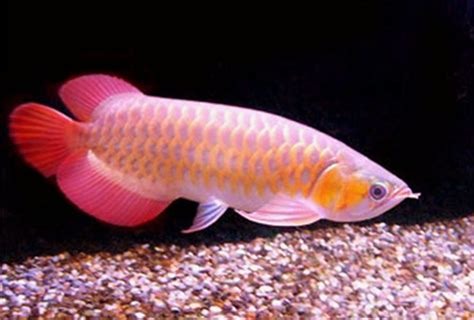Arowana Color Grading: What Affects Their Vibrant Hues?
Arowana Color Grading: What Affects Their Vibrant Hues?
Arowana, those majestic creatures of the aquatic world, have captivated fish enthusiasts for generations with their stunning colors and graceful movements. The arowana color grading process is a fascinating aspect of these fish, influencing both their aesthetic appeal and market value. Did you know that some arowana specimens can fetch prices upwards of $300,000? It’s true! The secret behind these astronomical values often lies in their breathtaking colors. From genetics to diet, we’ll uncover the secrets that make these fish the true jewels of the aquarium world. So, let’s jump in and unlock the mystery of arowana colors!
The Genetics Behind Arowana Colors
Understanding the role of genes in determining base colors
The foundation of an Arowana’s color lies in its genetic makeup. Arowana color genetics play a crucial role in determining the base hues that will develop as the fish matures. Different species of arowana naturally exhibit varying color patterns:
- Asian arowana: Known for their vibrant reds, golds, and silvers
- South American arowana: Typically silver with a hint of red on their fins
- African arowana: Often displays a brownish-gray coloration
Arowana color variation by species is a result of thousands of years of evolution, adapting to their natural habitats and environmental conditions.
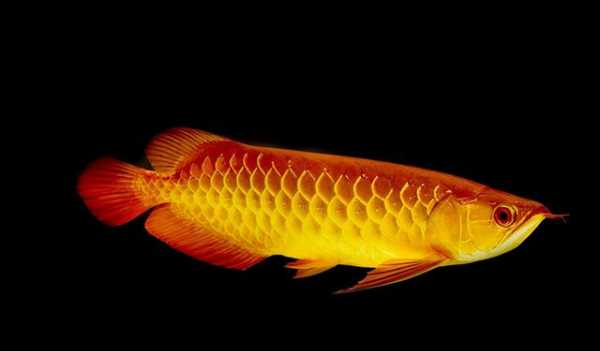
Exploring color mutations and rare variants
Arowana color mutation is a phenomenon that can lead to striking and rare color variations. Some of the most sought-after mutations include:
- Albino coloration: Characterized by a lack of pigmentation, resulting in white or pale yellow fish
- Blue base arowana: A rare mutation that produces a blue-tinted body
- Crossback golden arowana: Features a unique pattern of gold scales crossing over the back
These mutations can significantly increase the value of an arowana, with some specimens fetching astronomical prices in the aquarium trade.
How selective breeding affects color intensity
Breeders have long practiced arowana breeding for color to enhance desirable traits and produce more vibrant specimens. Through careful selection of parent fish with desired color characteristics, breeders can:
- Intensify existing colors
- Develop new color patterns
- Increase the likelihood of rare color mutations
Arowana color manipulation through selective breeding has led to the creation of highly prized varieties like the Super Red arowana, known for its intense red coloration.
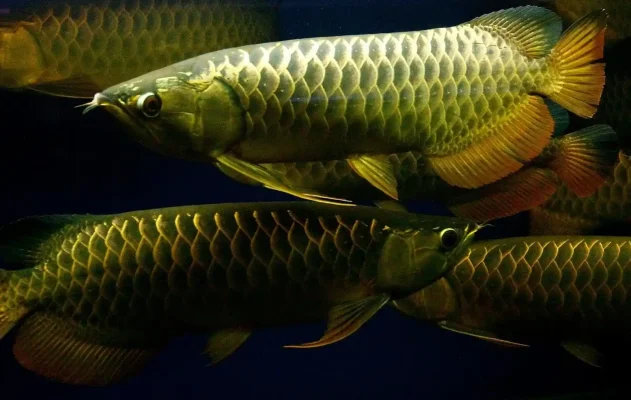
The Impact of Diet on Arowana Hues
Essential nutrients for vibrant coloration
A well-balanced diet is crucial for maintaining and enhancing the colors of arowana. Key nutrients that contribute to arowana pigmentation include:
- Carotenoids: These pigments are responsible for red, orange, and yellow hues
- Protein: Essential for overall health and scale development
- Vitamins A and D: Support skin and scale health
Incorporating a variety of high-quality foods in an Arowana’s diet can significantly impact its color intensity and overall appearance.
Natural vs. synthetic color-enhancing foods
When it comes to diet for vibrant arowana, aquarists have two main options:
- Natural color-enhancing foods:
- Crustaceans (shrimp, crayfish)
- Fish with naturally high carotenoid content (salmon, trout)
- Insects rich in chitin (crickets, mealworms)
- Synthetic color-enhancing foods:
- Commercially prepared pellets with added color enhancers
- Arowana color supplements in powder or liquid form
While both options can be effective, many experts recommend a combination of natural and synthetic foods for optimal results.

Feeding strategies to maximize color potential
To achieve the best results in arowana color enhancement, consider the following feeding strategies:
- Offer a varied diet to ensure a wide range of nutrients
- Feed small portions multiple times a day rather than one large meal
- Incorporate color-enhancing foods gradually to avoid digestive issues
- Monitor the fish’s response to different foods and adjust accordingly
Remember, consistency is key when it comes to feeding for color enhancement. It may take several weeks or even months to see significant improvements in coloration.
Environmental Factors Affecting Arowana Colors
The influence of water quality on pigmentation
Water quality and arowana color are closely linked. Poor water conditions can lead to stress, which in turn affects the fish’s ability to maintain its vibrant hues. Key water parameters to monitor include:
| Parameter | Ideal Range |
|---|---|
| pH | 6.5 – 7.5 |
| Temperature | 24°C – 30°C (75°F – 86°F) |
| Ammonia | 0 ppm |
| Nitrite | 0 ppm |
| Nitrate | < 20 ppm |
Maintaining these parameters within the recommended ranges can help ensure optimal arowana color development and overall health.
Lighting and its role in color perception
Proper lighting is essential not only for the health of your arowana but also for showcasing its colors. Consider the following when setting up lighting for arowana color:
- Use full-spectrum LED lights to bring out the fish’s natural hues
- Experiment with different color temperatures to enhance specific color tones
- Provide a consistent day/night cycle to reduce stress
UV light exposure can also play a role in color development but should be used cautiously to avoid potential harm to the fish’s eyes and skin.
Stress and its impact on color intensity
Stress can have a significant negative impact on arowana hues. Common sources of stress include:
- Overcrowding
- Aggressive tank mates
- Sudden changes in water parameters
- Inadequate hiding spots
To minimize stress and maintain vibrant colors:
- Provide a spacious tank with plenty of swimming room
- Choose compatible tank mates or consider keeping arowanas in species-specific setups
- Perform regular water changes and maintain stable water parameters
- Offer plenty of plants and decorations for cover.
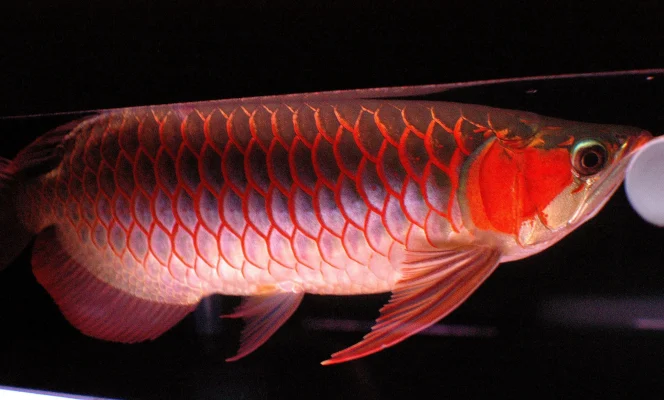
Arowana Color Grading Systems
Overview of popular grading scales
Arowana color grading scales vary depending on the species and region. However, most systems consider the following factors:
- Color intensity and uniformity
- Pattern clarity and distinctiveness
- Body shape and proportion
- Fin condition and size
Some popular grading systems include:
- The Asian Arowana 5-Star Grading System
- The International Arowana Grading Standard (IAGS)
- The Super Red Arowana Grading Scale
Factors considered in professional color grading
Arowana color grading experts take into account various aspects when evaluating a fish:
- Base color purity
- Secondary color intensity
- Scale alignment and reflectivity
- The presence of any unique patterns or markings
- Overall body condition and finnage
Arowana color photography plays a crucial role in documenting and comparing specimens during the grading process.
How grading affects arowana value
The color and market value of an arowana is closely tied. Higher-grade specimens with exceptional coloration can command premium prices in the aquarium trade. Factors that can significantly increase an Arowana’s value include:
- Rare color mutations
- Intense and uniform coloration
- Unique patterns or markings
- Perfect scale alignment and shine
It’s important to note that while color is a significant factor in determining an Arowana’s value, other aspects such as size, overall health, and lineage also play important roles.
Enhancing and Maintaining Arowana Colors
Best practices for optimal color development
To achieve and maintain the best possible colors in your arowana:
- Provide a balanced diet rich in color-enhancing nutrients
- Maintain pristine water conditions through regular maintenance
- Offer a stress-free environment with adequate space and hiding spots
- Use appropriate lighting to showcase the fish’s natural colors
- Implement a consistent care routine to promote overall health
Common mistakes that dull arowana hues
Avoid these pitfalls to prevent arowana color fading:
- Overfeeding or relying on a single food type
- Neglecting water quality maintenance
- Keeping arowanas in undersized tanks
- Exposing fish to excessive stress from handling or aggressive tank mates
- Using inappropriate lighting that washes out natural colors
Long-term strategies for preserving vibrant colors
For long-term arowana color preservation:
- Regularly assess and adjust your care routine as needed
- Stay informed about advancements in arowana care and nutrition
- Consider professional color enhancement treatments when appropriate
- Document your Arowana’s color development through photographs
- Participate in arowana enthusiast communities to share knowledge and experiences.
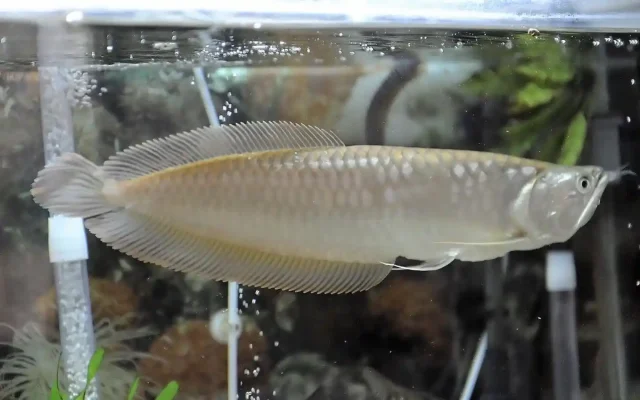
The Science of Arowana Color Change
Understanding color-changing mechanisms in arowana
Arowanas possess specialized cells called chromatophores that are responsible for their ability to change color. These cells contain pigments and reflective structures that can be manipulated to alter the fish’s appearance. The main types of chromatophores in arowanas include:
- Melanophores: Contain black and brown pigments
- Erythrophores: Responsible for red coloration
- Xanthophores: Produce yellow hues
- Iridophores: Create iridescent and metallic effects
The interplay between these cells results in the complex and vibrant colors we observe in arowanas.
Age-related color transformations
Arowana color and age relation is an important aspect of their development. Many arowana species undergo significant color changes as they mature:
- Juvenile arowanas often have dull or muted colors
- As they grow, their colors intensify and patterns become more defined
- Some species, like the Asian arowana, may take several years to reach their full-color potential
It’s crucial to be patient when raising young arowanas, as their true colors may not be fully apparent until they reach maturity.
Temporary vs. permanent color changes
Arowanas can experience both temporary and permanent color changes:
Temporary changes:
- Stress-induced color fading
- Breeding-related color intensification
- Seasonal color changes due to environmental factors
Permanent changes:
- Age-related color development
- Arowana color evolution through selective breeding
- Color shifts due to long-term environmental influences
Understanding these changes can help aquarists better appreciate and care for their arowanas throughout their lives.
Key Takeaways
- Arowana color grading is influenced by genetics, diet, environment, and care practices.
- Selective breeding has led to the development of rare and valuable color mutations.
- A balanced diet rich in carotenoids and other essential nutrients is crucial for vibrant colors.
- Maintaining optimal water quality and reducing stress are key to preserving arowana colors.
- Professional color grading systems consider factors such as color intensity, pattern clarity, and overall condition.
- Long-term color preservation requires consistent care and regular assessment of the Arowana’s needs.
- Understanding the science behind arowana color changes can help aquarists better appreciate and care for their fish.

Frequently Asked Questions
- Q: How long does it take for an arowana to develop its full colors? A: The time it takes for an arowana to develop its full colors can vary depending on the species and individual. Generally, it can take anywhere from 1 to 5 years for an arowana to reach its peak coloration.
- Q: Can I change the color of my arowana? A: While you cannot completely change an Arowana’s base color, you can enhance its existing colors through proper diet, water quality management, and stress reduction.
- Q: Are there any risks associated with color enhancement supplements? A: Some color enhancement supplements, if used improperly, can lead to health issues. It’s important to follow manufacturer instructions and consult with experienced aquarists before using any supplements.
- Q: Do different arowana species have different color potential? A: Yes, different arowana species have varying color potentials. Asian arowanas are known for their vibrant reds and golds, while South American species tend to have more subdued silver colorations.
- Q: How does lighting affect arowana colors? A: Proper lighting can enhance the visibility of an Arowana’s natural colors. Full-spectrum LED lights are often recommended to bring out the best in arowana coloration.
- Q: Can stress permanently affect an Arowana’s color? A: Prolonged stress can lead to permanent color fading in arowanas. However, if the stressor is removed and proper care is provided, many arowanas can regain their vibrant colors over time.
- Q: Is it normal for arowana colors to change with age? A: Yes, it’s normal for arowana colors to change as they age. Many species become more vibrant and develop more defined patterns as they mature.
References


 Deutsch
Deutsch